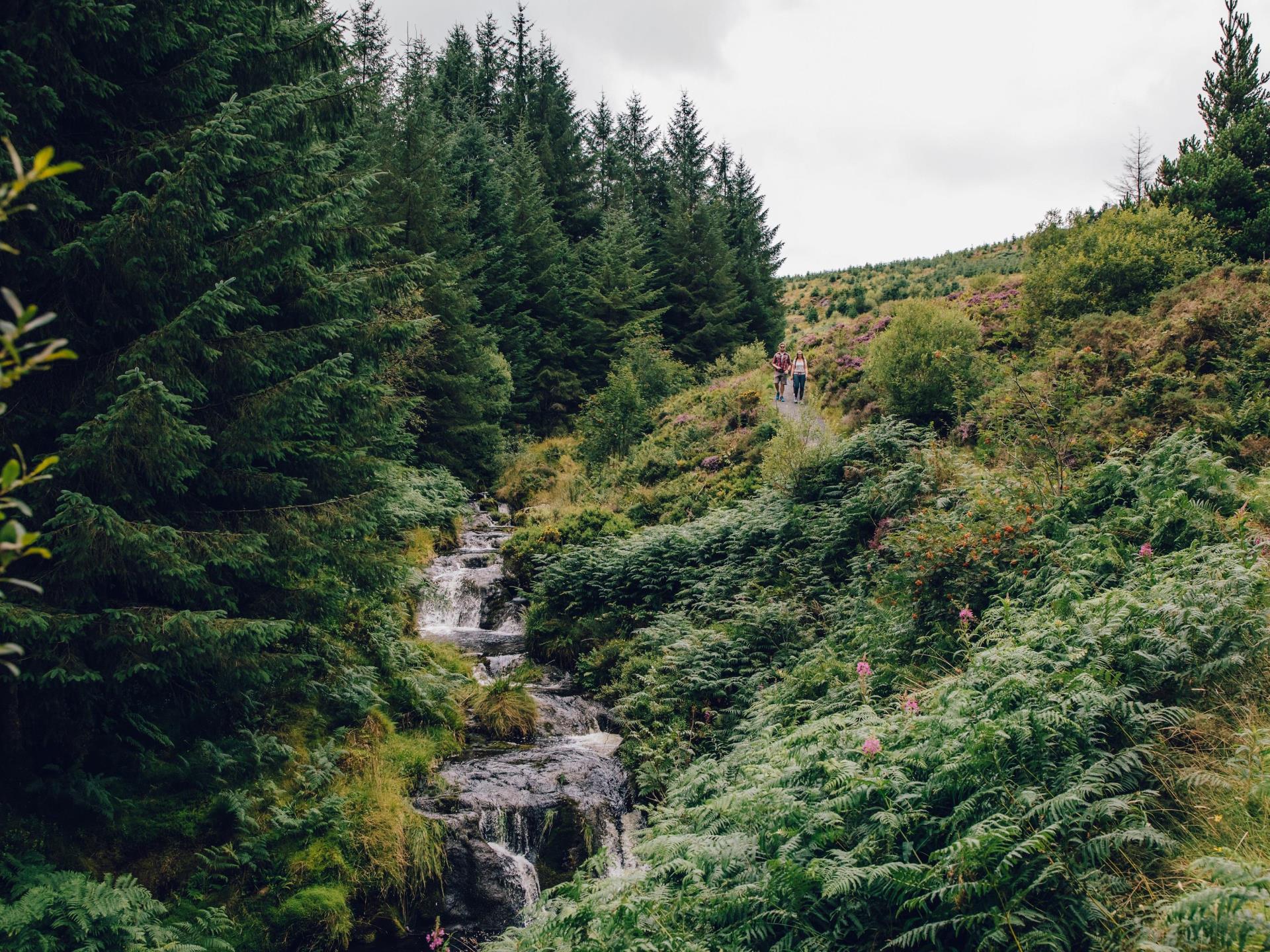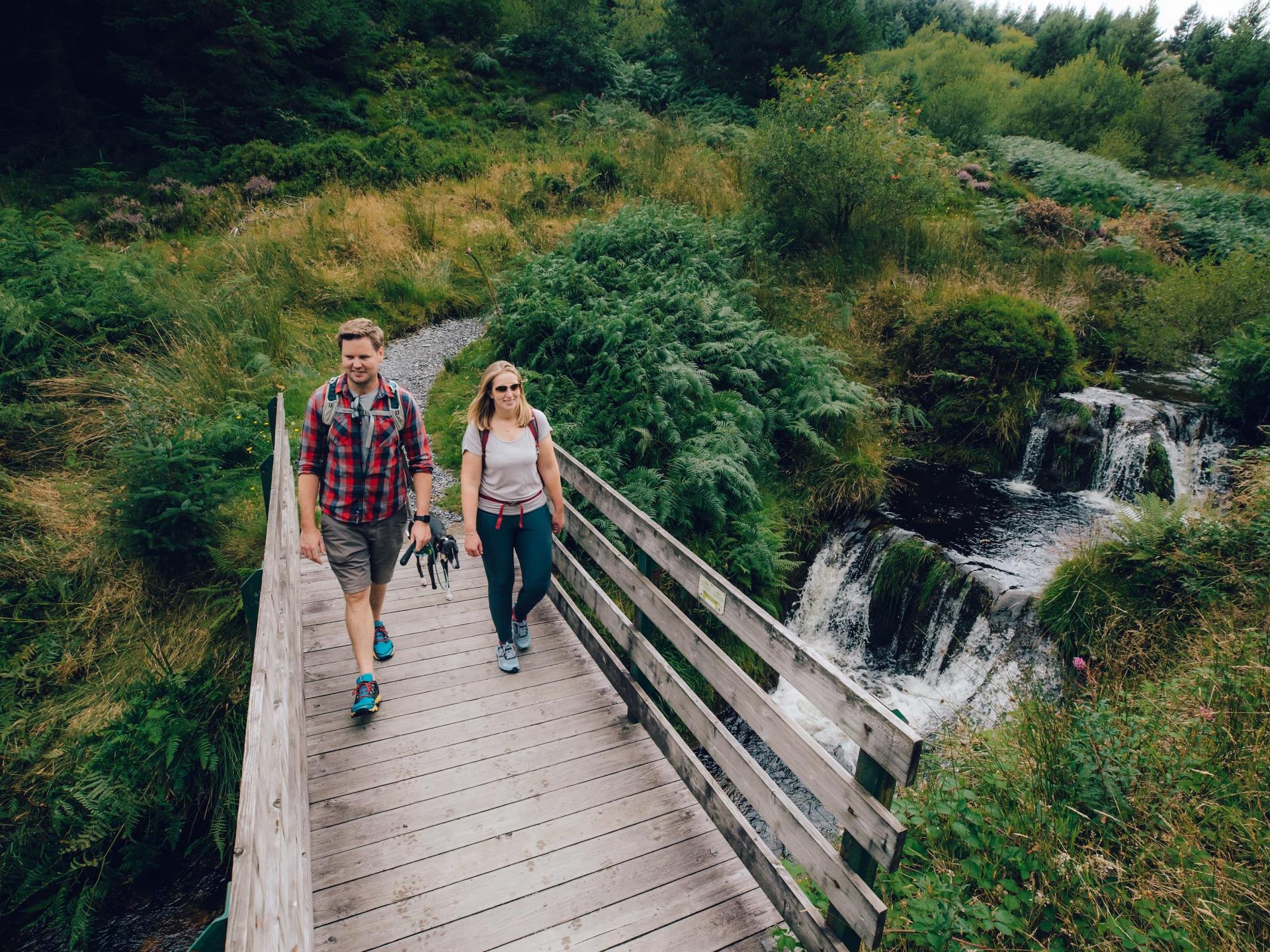Hafren Forest is reached along six miles of narrow minor roads from the town of Llandiloes.
This huge forest is named after Afon Hafren which is the Welsh name for the River Severn. The river flows through the forest in a series of waterfalls and cascades.
There is a choice of waymarked walking trails from the car park.
The longest trail goes to the source of the Severn on the slopes of Pumlumon, Mid Wales’s highest mountain which is just outside the forest’s boundary. The route passes some heritage features including a standing stone and the remains of a mine.
The shorter trails go to waterfalls within the forest, including the famous Severn-Break-its-Neck.
The accessible trail follows a boardwalk to a viewing platform over cascades.
Please read the information panel at the start of the trails to make sure you pick a trail that’s right for you.
FOR MORE INFORMATION
This site is managed by Natural Resources Wales.
For full details about the visitor facilities (including any temporary changes or closures) please go to the Natural Resources Wales website.


